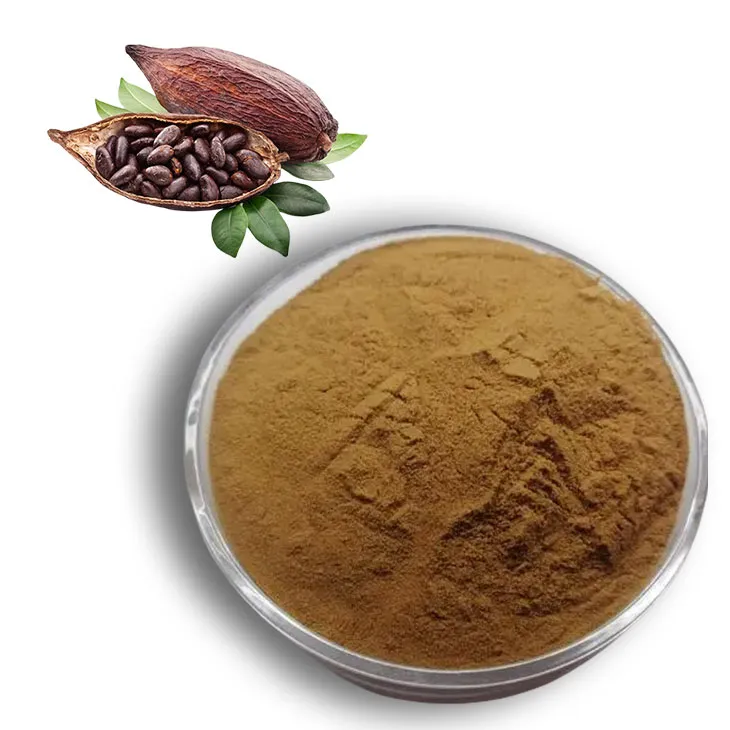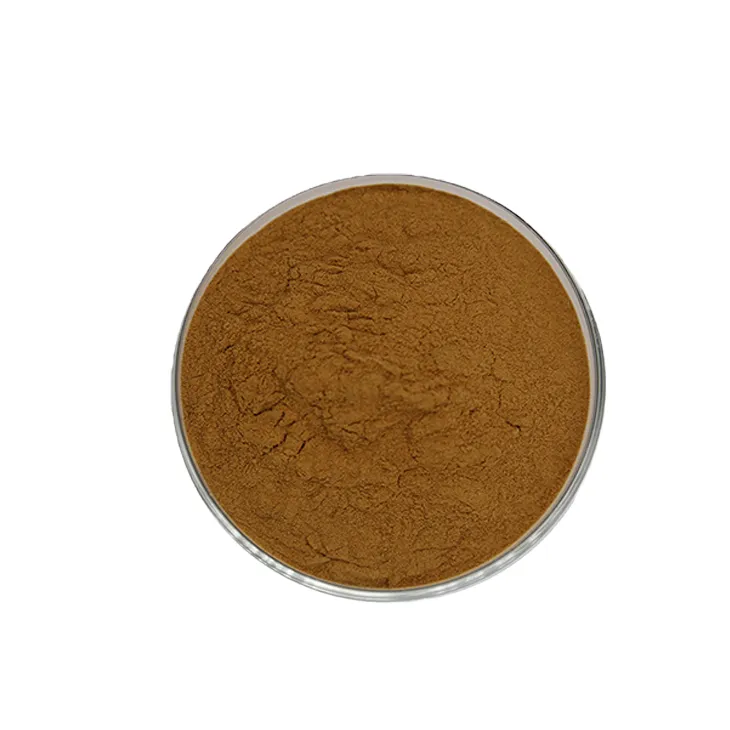- 0086-571-85302990
- sales@greenskybio.com
Cocoa Extract: Uses, Advantages and Manufacturing Processes
2024-11-13

1. Introduction
Cocoa Extract has emerged as a significant ingredient in various fields. Derived from the cocoa bean, it offers a wide range of benefits and applications. This article will delve into the uses, advantages, and manufacturing processes of Cocoa Extract.

2. Uses in the Food Industry
Cocoa Extract plays a crucial role in the food industry as a natural flavor enhancer.
2.1 In Traditional Chocolate - Based Items
It is an essential component in traditional chocolate products. It imparts the characteristic rich and deep chocolate flavor that consumers love. Whether it is milk chocolate, dark chocolate, or white chocolate (which contains cocoa butter, a derivative of the cocoa bean), cocoa extract is at the heart of their flavor profiles.
2.2 In Ice Creams
Ice creams often benefit from the addition of cocoa extract. It provides a more intense and authentic chocolate flavor compared to artificial flavorings. This is especially important for high - quality, artisanal ice creams where the purity and depth of flavor are highly prized. Different types of cocoa extract can be used to create a variety of chocolate - flavored ice creams, such as dark chocolate ice cream with a more bitter and intense flavor or milk chocolate ice cream with a creamier and sweeter taste.
2.3 In Sauces
Cocoa extract is also used in sauces. In chocolate - based sauces, it is the main flavoring agent. For example, in a chocolate sauce for desserts like pancakes or waffles, cocoa extract gives the sauce its distinct chocolatey taste. Moreover, it can be used in savory sauces as well. In some mole sauces, which are a traditional Mexican sauce with a complex flavor profile that includes elements of chocolate, cocoa extract is used to add that touch of chocolate flavor without making the sauce overly sweet.
2.4 In Savory Dishes
Surprisingly, cocoa extract can find its place in some savory dishes. In certain meat - based recipes, a small amount of cocoa extract can add an unexpected depth of flavor. It can enhance the umami flavor and create a more complex taste profile. For example, in a beef stew, a dash of cocoa extract can bring out the richness of the meat and add a subtle layer of flavor that is both unique and delicious.

3. Manufacturing Processes
The manufacturing process of cocoa extract is a complex yet fascinating one.
3.1 Harvesting of Cocoa Pods
The process begins with the harvesting of cocoa pods. Cocoa trees typically grow in tropical regions, and the pods are harvested when they are ripe. Ripe cocoa pods are usually orange or yellow in color. The pods are carefully cut from the tree to avoid damaging the beans inside. This is a labor - intensive process as it often requires skilled workers who can identify the ripe pods accurately.
3.2 Removal of Beans and Fermentation
Once the pods are harvested, the beans are removed. After that, the beans undergo a fermentation process that can last for several days. Fermentation is a crucial step as it helps in developing the flavor of the cocoa beans. During fermentation, the beans are placed in heaps or in wooden boxes, and natural yeasts present in the environment start to act on the sugars in the beans. This process generates heat and causes chemical changes in the beans, which are essential for the development of the characteristic cocoa flavor.
3.3 Washing and Roasting
After fermentation, the beans are thoroughly washed to remove any remaining pulp or debris. Then comes the roasting step. The beans are roasted at specific temperatures. The roasting temperature and duration can vary depending on the type of cocoa bean and the desired flavor profile. Roasting not only further develops the flavor but also helps in removing moisture from the beans and making them easier to grind. Different roasting levels can produce different flavors, from light - roasted beans with a more fruity and acidic flavor to dark - roasted beans with a more intense and bitter flavor.
3.4 Extraction
Finally, the extraction is carried out to isolate the active compounds. There are different methods of extraction, such as solvent extraction or supercritical fluid extraction. Solvent extraction involves using a solvent, like ethanol or ethyl acetate, to dissolve the active compounds from the roasted and ground cocoa beans. The solvent is then removed, leaving behind the cocoa extract. Supercritical fluid extraction, on the other hand, uses a supercritical fluid, usually carbon dioxide, which has properties between a liquid and a gas. This method is often preferred as it is more environmentally friendly and can produce a purer extract.

4. Advantages of Cocoa Extract
Cocoa extract offers several advantages, both in terms of food properties and potential health benefits.
4.1 Role in Diabetes Management
Some research suggests that certain components in cocoa extract may help in regulating blood sugar levels. Flavonoids, which are present in cocoa extract, are thought to have a positive impact on insulin sensitivity. This could potentially be beneficial for people with diabetes or those at risk of developing diabetes. However, more research is still needed to fully understand the mechanisms and the effectiveness of cocoa extract in diabetes management.
4.2 Antioxidant Properties
Cocoa extract is rich in antioxidants. Antioxidants are substances that can neutralize free radicals in the body. Free radicals are unstable molecules that can cause damage to cells and are associated with various diseases, including heart disease, cancer, and aging - related conditions. The antioxidants in cocoa extract, such as polyphenols, can help protect the body's cells from oxidative stress and reduce the risk of these diseases.
4.3 Anti - microbial Properties
Another advantage of cocoa extract is its anti - microbial properties. It has been shown to have the ability to inhibit the growth of certain microorganisms. This can be useful in food preservation. In food products, the presence of cocoa extract can help prevent the growth of spoilage - causing bacteria, yeasts, and molds, thereby extending the shelf life of the products. Additionally, in a medical context, its anti - microbial properties may have potential applications in the development of new antimicrobial agents.

5. Conclusion
In conclusion, cocoa extract is a versatile and valuable substance. Its uses in the food industry are extensive, ranging from traditional chocolate products to unexpected savory dishes. The manufacturing process is complex, involving multiple steps from harvesting to extraction. Moreover, the advantages it offers, including potential benefits in diabetes management, antioxidant, and anti - microbial properties, make it an ingredient worthy of further study and exploration. As research continues, we can expect to see more applications and a deeper understanding of this remarkable cocoa extract.
FAQ:
What are the main uses of cocoa extract in the food industry?
Cocoa extract is mainly used as a natural flavor enhancer in the food industry. It adds depth and richness to products. It is used in traditional chocolate - based items, ice creams, sauces, and some savory dishes where a touch of chocolate flavor is desired.
What is the manufacturing process of cocoa extract?
The manufacturing process of cocoa extract starts from the harvesting of cocoa pods. After the beans are removed from the pods, they go through a fermentation process that can last for several days. Then they are thoroughly washed and roasted at specific temperatures. Finally, the extraction is carried out to isolate the active compounds.
How might cocoa extract be beneficial in diabetes management?
Some research suggests that certain components in cocoa extract may help in regulating blood sugar levels. However, more studies are needed to fully understand this potential benefit.
What are the antioxidant and anti - microbial properties of cocoa extract?
The antioxidant properties of cocoa extract can help protect cells from damage caused by free radicals. Its anti - microbial properties can contribute to food preservation by inhibiting the growth of microorganisms. These properties also have implications for human health protection.
Can cocoa extract be used in non - food products?
While cocoa extract is mainly known for its use in the food industry, it may also have potential applications in non - food products. For example, in the cosmetics industry, its antioxidant properties could be beneficial for skin health. However, more research is required to explore these non - food applications fully.
Related literature
- The Health Benefits of Cocoa Extract: A Comprehensive Review"
- "Cocoa Extract in Food Processing: Techniques and Innovations"
- "Cocoa Extract: From Bean to Bottle - Understanding the Manufacturing Chain"
- ▶ Hesperidin
- ▶ citrus bioflavonoids
- ▶ plant extract
- ▶ lycopene
- ▶ Diosmin
- ▶ Grape seed extract
- ▶ Sea buckthorn Juice Powder
- ▶ Beetroot powder
- ▶ Hops Extract
- ▶ Artichoke Extract
- ▶ Reishi mushroom extract
- ▶ Astaxanthin
- ▶ Green Tea Extract
- ▶ Curcumin Extract
- ▶ Horse Chestnut Extract
- ▶ Other Problems
- ▶ Boswellia Serrata Extract
- ▶ Resveratrol Extract
- ▶ Marigold Extract
- ▶ Grape Leaf Extract
- ▶ blog3
- ▶ Aminolevulinic acid
- ▶ Cranberry Extract
- ▶ Red Yeast Rice
- ▶ Red Wine Extract
-
Mango flavored powder
2024-11-13
-
Genistein
2024-11-13
-
Mulberry Extract
2024-11-13
-
Nettle Root Extract
2024-11-13
-
Yohimbine Bark Extract
2024-11-13
-
Scutellaria Extract
2024-11-13
-
Citrus Aurantium Extract
2024-11-13
-
Chia Seed Powder
2024-11-13
-
White Willow Bark Extract
2024-11-13
-
Echinacea Extract
2024-11-13





















